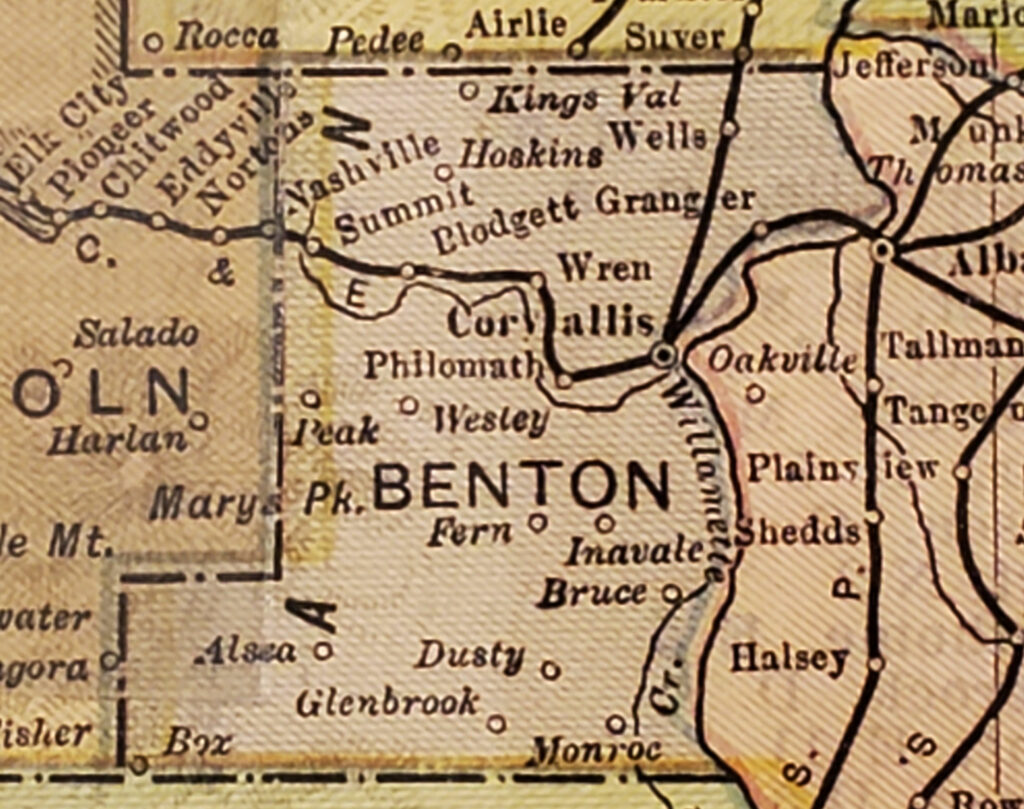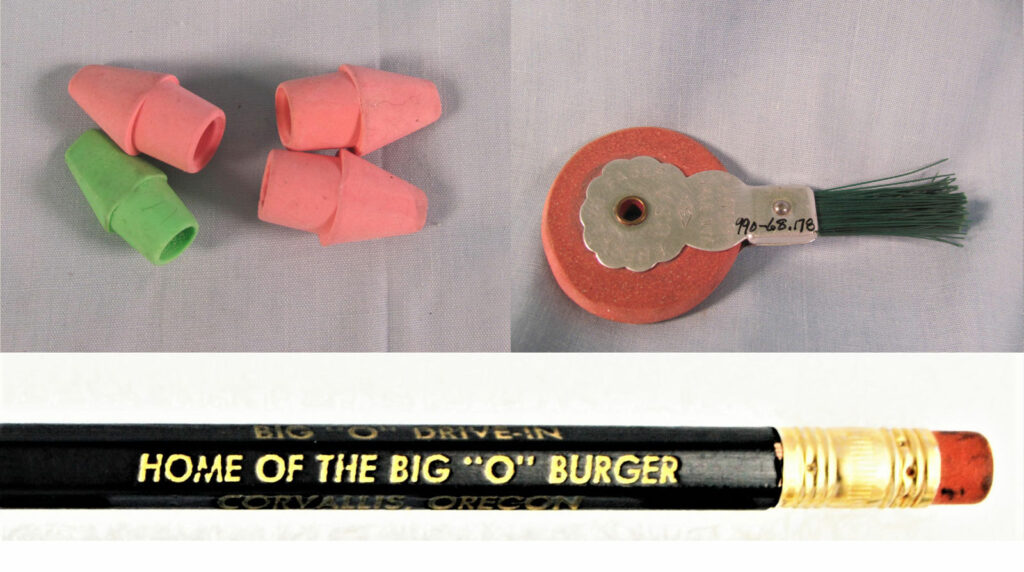When the Benton County Historical Society acquired the Horner Collection, it received a number of scientific equipment. The largest of these instruments is the RCA EMU-2B TEM, an electron microscope.
Oregon State University acquired the microscope in 1951 for $180,000 (equivalent to over $2 million in today’s dollars) for use in research in the colleges of agriculture and science. Electron microscopes allow for a greater degree of magnification than conventional microscopes whose power of magnification is limited by the wave length of light about 2000 times.
Electron microscopes work differently, using a magnetic field to focus a stream of electrons in a vacuum. The beam of electrons passes through an object to create a “shadow” on a fluorescent screen. The RCA machine recorded these images as 5 2 x2 photos on a 2 x 10 glass plate. It was capable of magnifying an object 100,000 times.
Researchers first used the electron microscope to “characterize carbon ‘soot’ particles… [to] aid in identifying ‘source’ warships.” It was later moved from the department of physics to the zoology department where researchers used it to study a tomato, potato, sockeye salmon, flu and mumps viruses. They also used it to examine bacteria, milk proteins, and animal sperm. Oregon crime lab also used it to identify particles on clothing.
Oregon State University acquired a newer model (EMU-3H) in 1963-1964.



